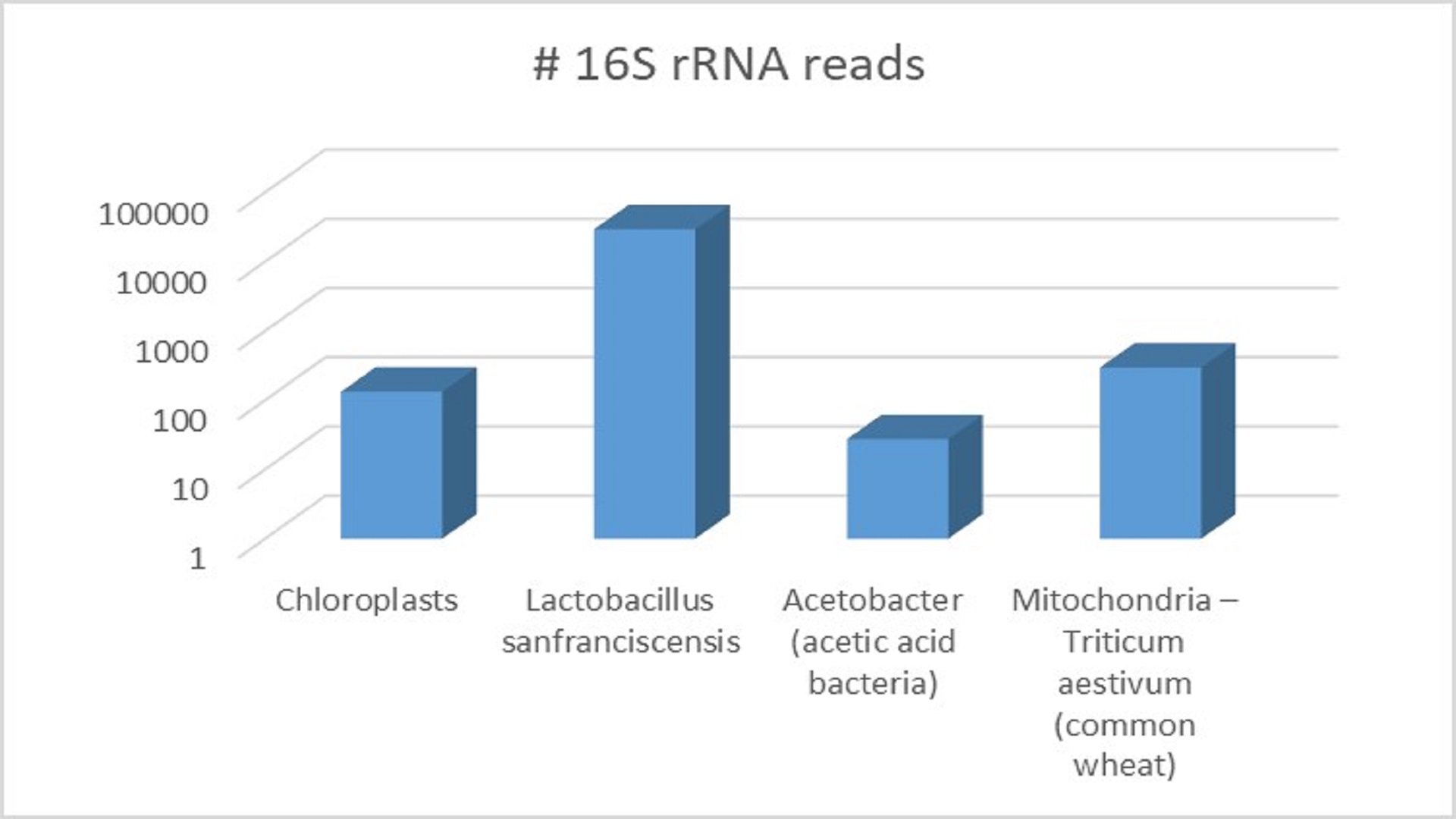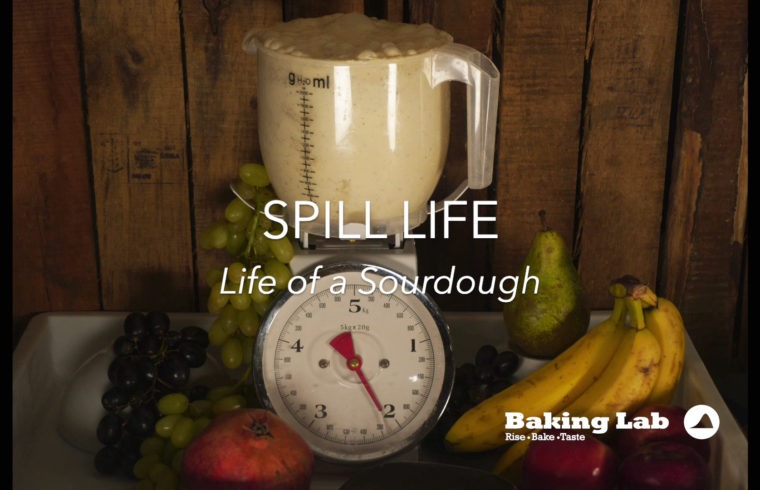ARTIS-Micropia researches and finds acetic acid bacteria flavouring sourdough
This article was created in collaboration with Micropia (Artis). [ rewilding planet earth]
Sourdough has been eaten worldwide for millennia, and tasted differently everywhere. Micropia investigated the microbial composition of sourdough from the circular bakery Baking Lab in Amsterdam and found the well-known wild baker’s yeast, the typical sourdough lactic acid bacteria Lactobacillus sanfranciscensis and the acetic acid bacteria of the genus Acetobacter. Recent research into the composition of sourdough starters shows that acetic acid bacteria are responsible for the great variation in flavours and aromas in sourdough.
What is sourdough bread?
Some people love it, others don’t: sourdough bread. Generally a lot flatter and often firmer, and above all more sour than normal bread. Sourdough bread is therefore very different from “normal” bread. Like bread dough, sourdough bread consists mainly of flour and water. But instead of baker’s yeast, a sourdough starter is added. In addition to yeast, this starter mainly consists of lactic acid bacteria that provide the unique taste and smell. Because there is relatively little yeast in it, it takes longer to rise. Yeast produce carbon dioxide during the baking process and the bacteria do this hardly or not at all. The starter must be propagated carefully to prevent unwanted species from entering it.
Sourdough fairytale
Getting the composition of the starter exactly right is a painstaking process. Therefore, a part of the starter is saved each time and added to the new dough. For this reason, the starter could be hundreds of years old. The literature also shows that the microbial composition of the sourdough bread mainly depends on the feeding conditions: how often the culture is renewed, at what temperature this is done, what the humidity is of the mixture, and with what kind of flour you feed the starter. These parameters largely determine which microbeswill start dominating the culture. The idea that your culture is exactly the same as that of your great-grandparents is steeped in nostalgia, and that’s fine too. Because good food can taste like a fairytale. Sourdough bakers who manage to tame their culture acidify it in a controlled way to obtain the correct acid balance between lactic acid and acetic acid.
Both science and art are attempts to understand and describe the world around us. Below the Spill Life vide: the art of sourdough fermentation
Spill Life: a sourdoug fairy tale. The art & science of sourdough fermentation. Art and science are more closely related than you think? Read more. Recent research about sourdough (1) The Global Sourdough Project
(2) The diversity and function of sourdough starter microbiomes
Tastes differ
Sourdough has been produced all over the world since the ancient Egyptians. And in different places the sourdough has a different odour and taste profile. American researchers have looked at these taste and smell differences. They examined the microbial composition in all of these starters. They also looked at the volatile substances produced by the microbes in the dough. These VOCs are important for the taste and smell of the bread.
Lots of flavour due to acetic acid bacteria
The sourdough starters are home to a variety of microbe species. However, the research indicates that the microbial composition is not related to where the starter originates geographically. This means that American sourdough starters are not more similar to each other than an American and a Dutch starter. This may be due to the use of different conditions (see above) and because the starters are exchanged. In addition, the bacteria and yeasts also enter the starter via the flour, and flour has also been traded worldwide for centuries. Nevertheless, the microbial diversity in the starters does influence the tastes and smells. The research shows that a higher percentage of acetic acid bacteria provides a greater variety of fruity flavors and aromas (VOCs). Previously, it was always thought that the lactic acid bacteria were responsible for this. However, the increased flavour variation due to more acetic acid bacteria does come with a price: the bread doesn’t rises as well because the bacteria slow down the growth of yeast.
Research of ARTIS-Micropia on sourdough
In a small pilot experiment Micropia also looked at the composition of sourdough from the circular bakery Baking Lab Amsterdam . DNAwas isolated from the sourdough and a profile of the bacterial composition obtained by sequencing. The experiment showed that the microbes in the sourdough consist for the most part (98%) of the typical sourdough lactic acid bacteria Lactobacillus sanfranciscensis and a small part (0.1%) of acetic acid bacteria of the genus Acetobacter. The rest of the DNA does not come from bacteria, but from mitochondriaand chloroplastscontained in the grain that are in the sourdough.
| Landis et al. 2021 – The diversity and function of sourdough starter microbiomes https://elifesciences.org/articles/61644 |

A stop motion visualisation of the activity of an “identical” microbal sourdough starter that was refreshed (fed) at different intervals (balloon colours).
For each pair of balloons, the left bottle has no salt and the right bottle contains 2% salt. The CO2 gas released during fermentation into the balloons is an indication of the fermentation speed.
The feeding mixtures of the “identical” starter cultures:
14% sourdough starter
T65 wheat flour
Hydration 72%
Balloon pairs (with and without salt (2%)
1) (Blue balloons) daily refreshed starter
2) (Yellow balloons) starter refreshed once a week
3) (Red balloons) Starter kept in the fridge for weeks without refreshments
The retarding effect of salt is clearly visible (right bottles)
Daily refreshed starter is most active (blue)
Starter that has been in the refrigerator for weeks without being refreshed shows no more activity
This article was published in a shorter version on the Micropia Artis website on 26 March 2021
Sharing our sourdough starter
We shared our sourdough with the community since the start of our bakery and during the corona pandemic many more people came over to collect the natural leaving culture to bake at home. Recipients of our sourdough are now requested to share their location so we can visualise its distribution.
#sourdough #desem #zuurdesem @your_wildlife #micropia_amsterdam @Micropia #microbes #microbiology #acidbacteria @tuftsuniversity @wolfelab #wsu_bread_lab @dejacusse #lactobacillus #sanfranciscensis #saccharomyces #cerevisiae @elifesciences @remcokort @ltvanooijen #fermentology @lupo.labs #rewilding
Source:
| Landis et al. 2021 – The diversity and function of sourdough starter microbiomes https://elifesciences.org/articles/61644 |

